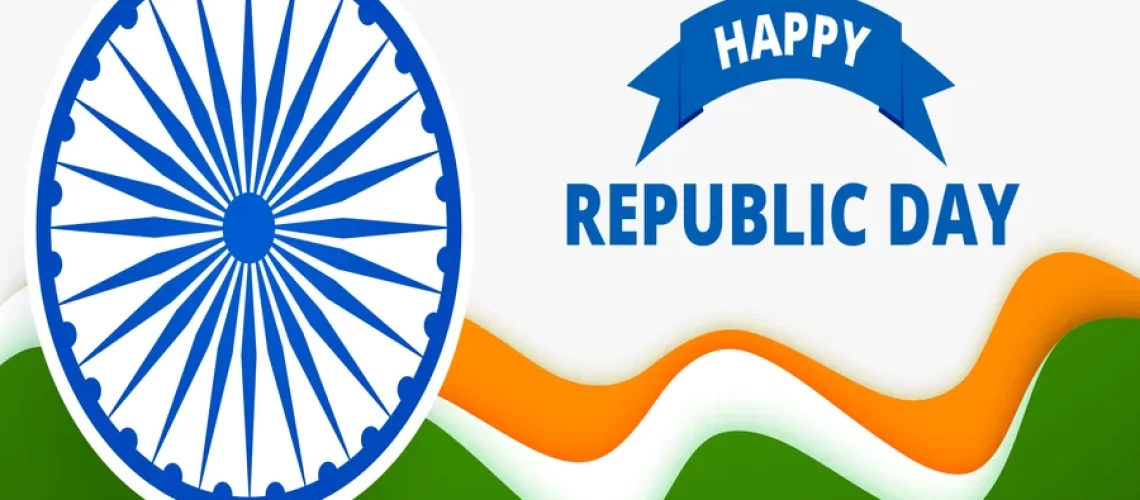India is the second-most populous nation in the world. It is also attributed to the largest democracy in the world. It is diverse. It is culturally enriched and it celebrates its 73rd Republic Day this month. India became a Republic in the year 1950, three years after achieving its independence. A former British colony, India achieved its independent status after a struggle which lasted for more than 200 years.
India was granted the status of an internationally recognized sovereign nation on the 15th of August, 1947 following which members of the Constituent Assembly bore their blood and sweat in the making of the free nation’s constitution.
It was on the 26th of January did India officially adopted the principles of the constitution marking the day of adoption as Republic Day. The day is celebrated all over the country each year and is a national holiday too.
India has come a long way in the last 73 years. It grew from a predominantly agricultural economy to a rising powerhouse of industrialization in Asia. In terms of military strength, India gained momentum post-90s and currently stands as the World’s third-largest military force.
First Things’ First – What or rather Who is a Republic?
A Republic is any nation that has no monarchy assigned its supreme power. A republic is a system of government in which the citizens and their elected officials hold ultimate authority. In republics, the nation and matters related to national unity are considered a “public matter,” rather than the leaders’ or monarchies’ private business or possession. Instead of being inhabited indefinitely either by a single bloodline or party.
The key power structures inside a republic are achieved by-election or a combination of democratization with oligarchy or autocracy. Contemporary republicanism has replaced monarchy as the dominant type of governance, and as a result, a contemporary republican has no king as its leader of the country.
As of 2017, the word ” republic” appears in the official names of 159 of the world’s 206 sovereign states. The term “republic” is not used in the names of all countries with democratic governments, nor is it used in the titles of all democracies. A republic is usually a single sovereign state, however, there are other sub-sovereign state entities that are referred to as republics or have republican governments.
For example, the United States Constitution provides a Republican system of government to every state in the Union. Another example was the Soviet Union, which referred to itself as a federation of “Soviet Socialist Republics,” referring to the 15 federal republics that made up the Soviet Union. The Russian Federation is a federal republic made up of numerous republics.
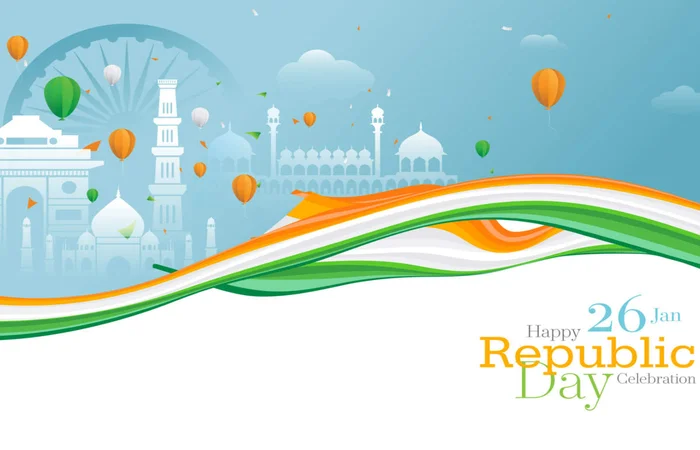
Image Source: TOI
History of the Indian Republic: What came before it, What after.
India was a flourishing nation in the Middle Ages. It has been reported by historians worldwide that India was one of the richest economies in the world back in the Mughal era. The Mughals ruled India for about 300 years and developed the country as one of the finest sources of spices, tobacco, rice and various metals.
This attracted foreigners, Europeans, mostly who set foot on the nation in search of trade deals. The Europeans were welcomed within the Country as the notion of international trade and commerce appealed to the Indian rulers back then.
Soon after, the riches of India instigated the European businessmen to set up administrative posts in the Country. They wished to direct the riches of the country to their European counterparts. This resulted in an ensuing power struggle between several European nations, mainly the British, French, Dutch and Portuguese. The situation was complemented further by the fractured unity amongst the Indian rulers who could not put up a united stance against the oncoming foreign aggression.
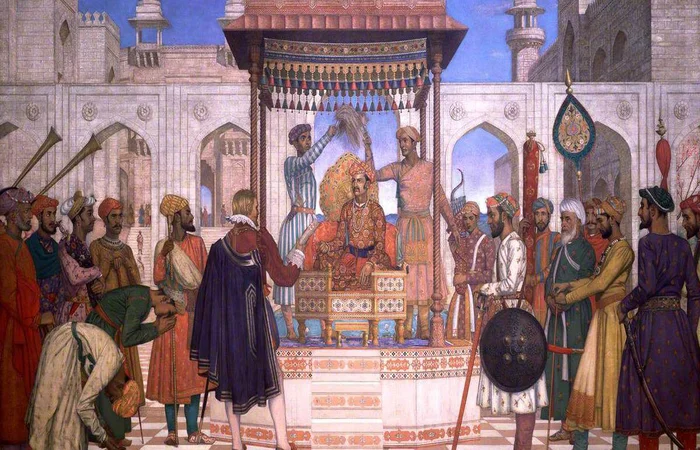
Image Source: Scroll. in
Ultimately, it was the British who emerged victoriously. They took control over the major administrative posts within the Country and commenced what is known as one of the longest colonial rules in the history of the World.
Their rule was not a cakewalk. While they received indigenous support from certain quarters, the resistance they faced came from a wide variety of people. From the poor farmers to the middle class, to the educated and affluent – anti – colonizer sentiment began to emerge as soon as the British set foot within the country.
Traces of this sentiment found their crescendo in the early 20th century following World War I. It was when people from all sections of the society, revolted and demanded that the colonizers leave the country. The British were forced to leave and declare India as an independent nation in 1947.
What followed was a two-year-long brainstorming session which ultimately culminated with the Constitution of India prepared and presented in the Constituent Assembly in November 1949. It was officially adopted along with the declaration of India as a Republic on 26th January 1950. The formation of the constitution was the joint effort of the members of the Constituent Assembly but it was one man, one man alone, who was attributed for its success of it. The man was Dr. B.R Ambedkar.
The Architect of the Indian Constitution – Dr B.R. Ambedkar.
India is a republic today because India has a constitution. India has a constitution because of the stellar efforts put forth by Dr Ambedkar. Fondly remembered by his followers as Baba Saheb, Dr Ambedkar was a man of great repute.
He was the former Minister of Law and Justice in India and was directly entrusted with the humongous responsibility of drafting India’s constitution by the first Prime Minister of Independent India – Jawaharlal Nehru. He was also an avid social reformer and an anti-caste activist in India.
Dr Ambedkar is the reason behind Indians having individual rights and guarantees mandated by the Constitution. The Constitution drafted by him abolished traditions such as untouchability and promoted equality in all spheres of life.
Discrimination on the basis of age, sex, religion and caste was criminalized by the tenants of the Indian Constitution. The freedom to practice all religions was added as an important part of the Constitution instilling the notions of tolerance within a turbulent Indian population.
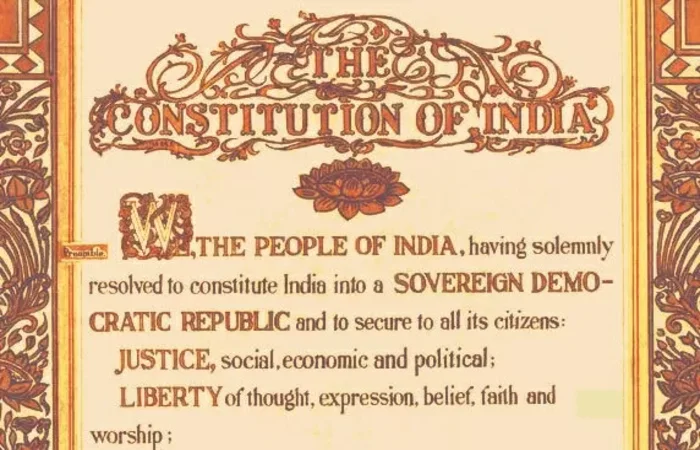
India back in the time of Independence was divided based on religious grounds. The task of the Constitution was to bind together such differences by maintaining a universal rule book. A book of law which guarantees unity and shows the path for upcoming laws and rules
It is because the Constitution guarantees freedom of speech, that any impediment on its path is considered a punishable offence. It is because the Constitution guarantees freedom to practice one’s own religion, anyone preventing the other from doing so can be held accountable in the eyes of law.
Republic Day: A Celebration in Style
Republic Day is celebrated in India in a colourful manner. On this day, the Republic Day Parade is the primary attraction. The parade takes place on Rajpath in Delhi, and many people attend. It is televised across the nation as well. People from the National Capital, New Delhi, assemble in large numbers to view the stunning show, despite the frigid weather.
The President of India raises the National Flag and honours India’s valiant citizens with the following :
Paramvir Chakra
It is India’s highest military award. It is conferred upon war heroes who exhibited acts of valour on the war field.Vir Chakra
– Another one of India’s military bravery awards, it is an award aimed at recognizing war heroes who exhibited enormous amounts of gallantry on the battlefield.Children’s National Bravery Award
– This award as the name suggests is a civilian award, especially for children who have undertaken an act of immense courage and bravery.Kirti Chakra
– Similar to the Ashok Chakra, the Kirti Chakra is awarded the aim of recognizing men and their contributions away from the battlefield.Ashok Chakra
– The Ashoka Chakra is the Country\’s highest peacetime military award, given for bravery, martyrdom, or chivalry in situations which did not involve the battlefield.
India’s Prime Minister pays tribute to the courageous people who gave their lives in battles. He pays respect to the fallen heroes by placing a wreath at Amar Jawan Jyoti at India Gate in Delhi.
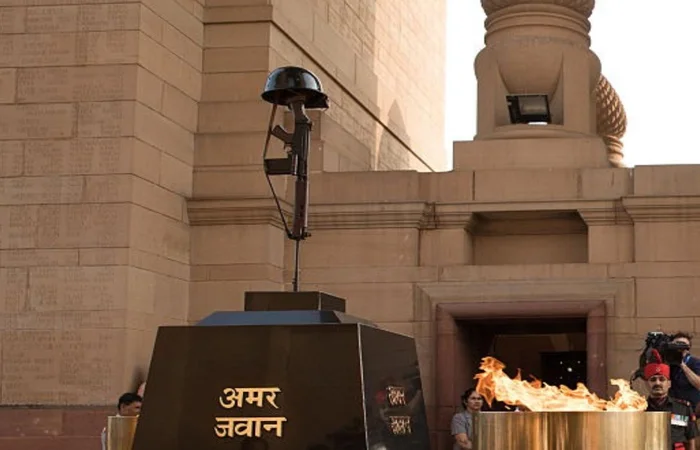
The three Indian Armed Forces divisions — Navy, Air Force, and Indian Army – lead the Republic Day Parade. Aside from that, there are several tableaus representing state culture, marching troop rallies, military bands, aviation demonstrations, and military transport displays of spectacular skill and bravery.
On this day, educational institutes in India are closed, but children return to school to commemorate and honour the national holiday by hoisting the national flag, conducting dance performances and plays, and distributing celebratory sweets. One of the most stunning marches around the globe is the Republic Day Parade. Visitors from all over the planet visit India during this time to watch the splendour of the Republic Day celebrations in the Capital.
Chief Guest of India: A Republic Day Tradition
Indian Republic Day remains incomplete without the invitation extended to foreign dignitaries or administrative heads. It has become a tradition for India to have foreign administrators or dignitaries present at the Republic Day parade. From Presidents to Prime Ministers, to Ambassadors, India has seen a vibrant host of political stalwarts grace the parade.
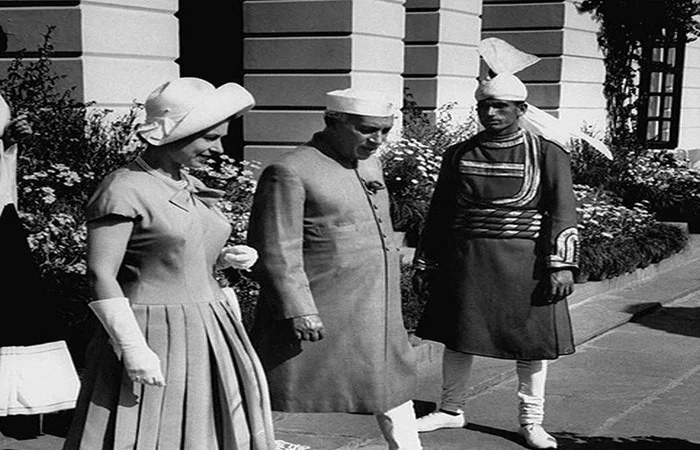
Did you know that Queen Elizabeth was the Chief Guest at the 10th Republic Day Celebration?
Source: India.com
Indonesian President Sukarno was the first Chief Guest of India at its first Republic Day Parade. The last distinguished guest was Brazilian President Jair Bolsonaro in 2020. The tradition has since then been discontinued since the arrival of the Covid 19 pandemic. The tradition of having foreign dignitaries honouring the event will not be continued even this year.
Republic Day 2022: What to Expect?
With the ongoing Covid Restrictions, the Government of India has curtailed the expected guest list from a whopping 24000 to 8000. Children below the age of 15 will not be allowed in the parade. Amidst the mandatory wearing of masks, thermal checks and sanitization at all entry points, double vaccination certificates are important. Even the ones with mild temperature would not be allowed to enter.
The Republic Day of India is the celebration of its constitution. The Indian constitution is a massive document that contains the processes, authorities, responsibilities, constitutional protections, and guiding principles that aid the Indian government in governing its population. The Indian Constitution’s guiding concept is “of the people, for the people, and by the people,” which means that authority is entrusted to the population of India.

